Big changes all around
The meadow in May…checking the progress and weeding, weeding…
Last year, here in the Sierra foothills, I started a meadow project in a weedy field below the south side of our home. Bounded by a sycamore tree on the south a path on the north, a rock garden on the west, the field was sowed with native CA wildflower and grass seed and was a joy all through the summer months. Weeding was the only maintenance.
This spring there are big changes. The perennials planted around the edge are thriving and green,…the whole field is greener than this time last year, even with the little rain we’ve had. The other change is with my available time to weed at the onset of the seedling stage. Taking a full time job prevents me from weeding for a solid week at the easy stage when weeds are small like I did last year.
I have been dismayed at the vengeance with which the filaree seedlings have sprouted. Is that why it’s green? No, the seeds have really come in thicker this year rather than sparser like I predicted. But, I believe removing the weeds is the key to continued success.
Poppies and flax predominate during the first of May. This week is the second that they’ve bloomed.
The weeds there are filaree, bur clover and Mouse ear. I’m removing a lot of the Coreopsis that is thriving from seeds around the place, all the Feverfew when found and a patch of Ajuga has popped up which I’ll move elsewhere. I’m removing many of the Elegant Madia or Tarweed seedlings because we already have fields of that in other places.
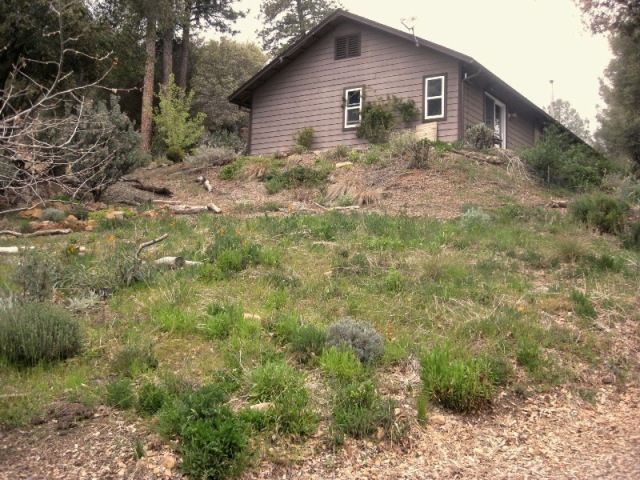
Perennials grow around the edge, lavender, agastche, penstemon, autumn sage, artemisia, sages and begin to bloom.
I notice more Golden yarrow, Eriophyllum confertiflorum, and small manzanita, our Arctostaphylos viscida or Sticky Whiteleaf Manzanita sprouts popping up….and lots of cudweed!

The brighter greens are cudweed, Pearly everlasting, Anaphalis margaritacea. You can now tell where I weeded.
Bert Wilson from Las Pilitas said about this:
“You can tell how much of a native nut’ a person is by how they react to this plant, WOW, you’ve got a PEARLY EVERLASTING!, or God, why don’t you pull out that weed! Sun or part shade, drought tolerant but tolerates regular water. Laughs at fertilizer, rock, dogs, feet, and bad gardening. A good plant for master’ gardeners or butterfly nuts.”
Judith Larner says, “The story of California native gardens is the story of weeds.” I believe it.
I may be weeding here but you can’t beat the working conditions. The weeding only took two or three days, a lot less than I thought it would take! I’m happy with my meadow in its second year.
More info on the Meadow project:
The story of California native gardens is the story of weeds and the importance of weeding in a restoration project
The entire Meadow project, month by month
What am I really doing in the garden in October? Planning and removing weeds
Do you dream of a natural and beautiful wildflower meadow? Finding and sowing seeding
Let’s check for progress on the meadow! Weeding and watching the weather
How to weed a meadow in the Sierra Foothills More weeding…letting the sprouts thrive
Let’s check on Fall and Winter projects! Identifying seedlings
The wildflower meadow in May Small triumphs
My California native meadow in June Starting to bloom
The midsummer meadow The peak bloom
Stomping down the Autumn meadow Neatening up
Native California meadow in the second year

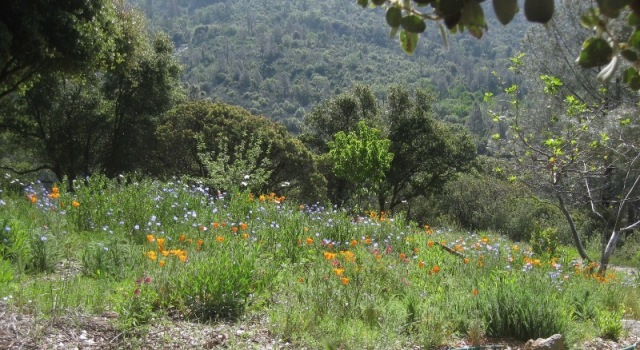

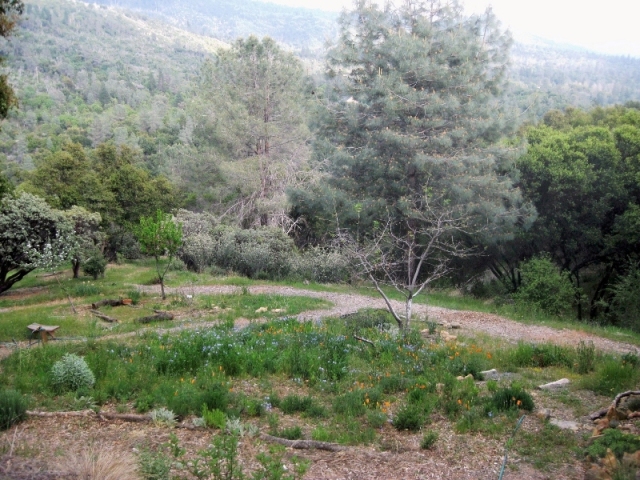
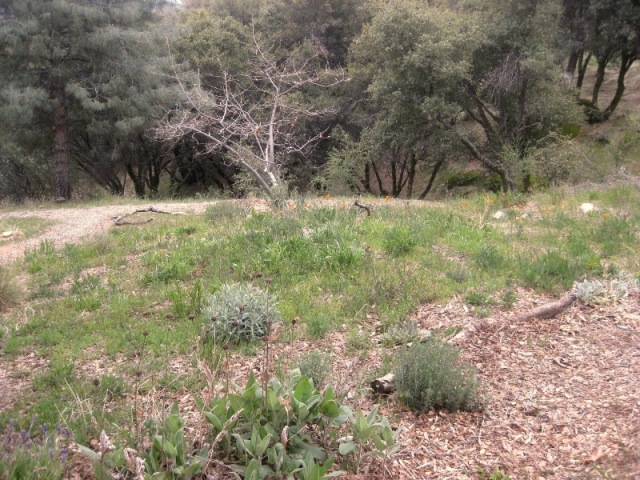
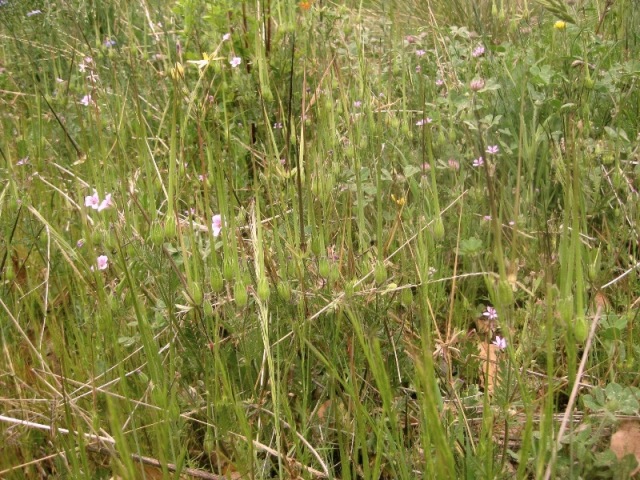

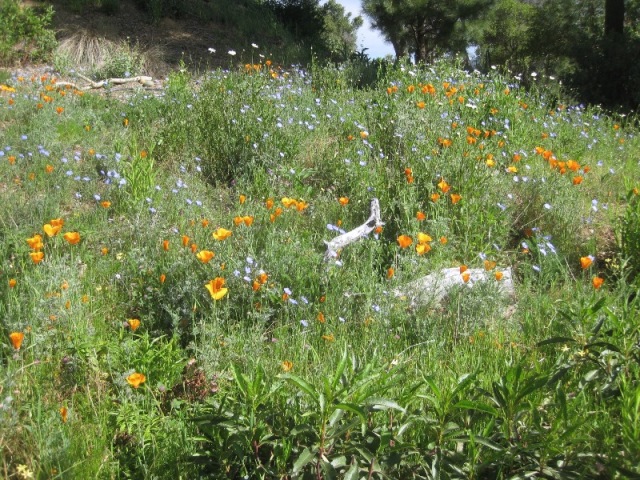
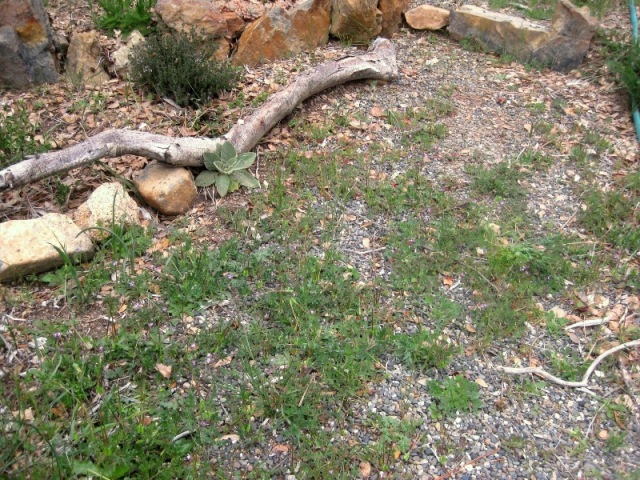
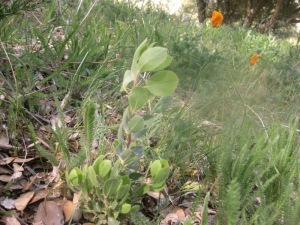
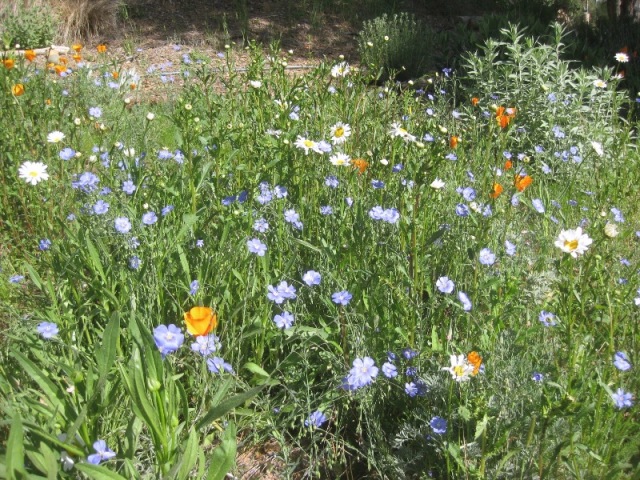



Pingback: Happy is the meadow planter | Sierra Foothill Garden